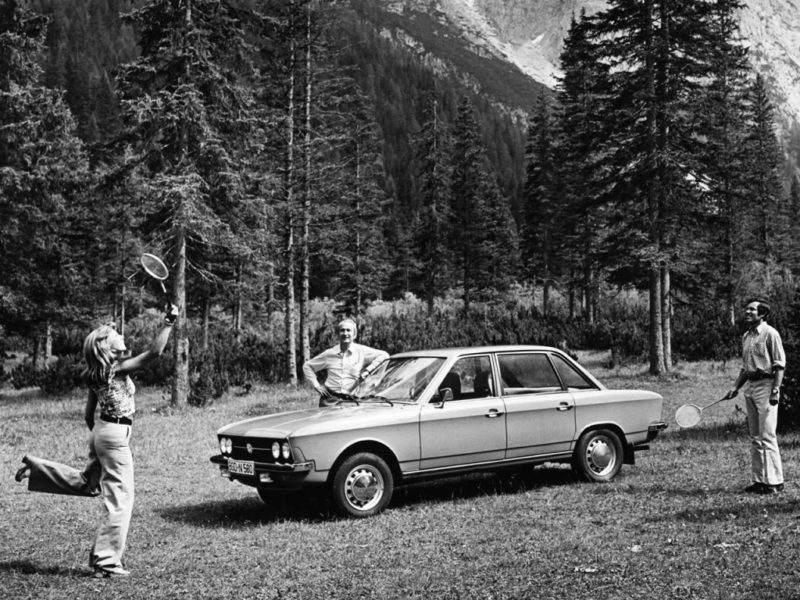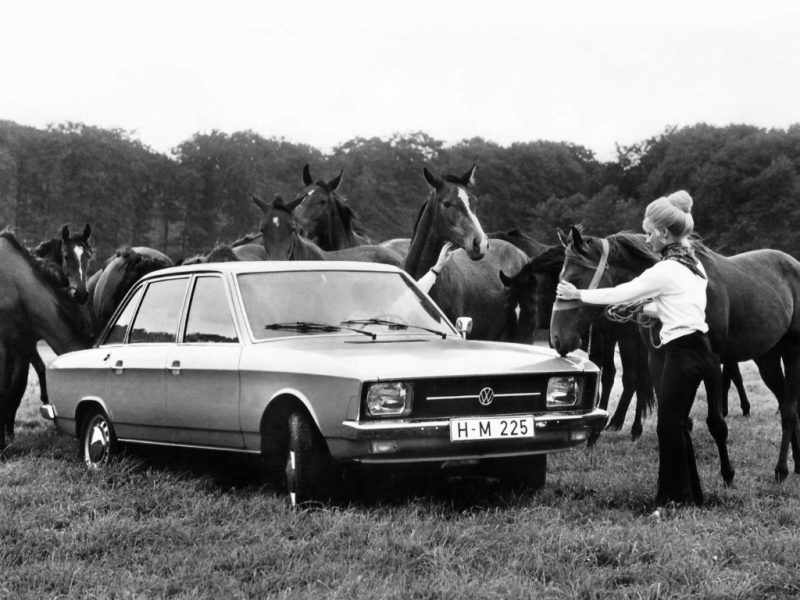The 1970 car year brought a variety of new cars. Some made a breakthrough, others paved the way. There were also manufacturers who further strengthened their own delivery range. In part 3 you can read more about the NSU that became Volkswagen, the Ascona that was predestined as Kadett and the Toyota generation that definitively established the Corolla name.
Volkswagen K70, 1970-1975
In fact, it was introduced in 1970 Volkswagen K70 the first VW with a water-cooled engine. And yet it was not a Volkswagen in terms of design. The advertising campaign “Umsteigen auf NSU” was already finished. But the proximity of NSU by the Volkswagen concern made that the new middle class, which was developed as NSU Kolben 70, made its debut as the VW K70. The press was enthusiastic about the K70, which stood out for its sleek design with sharp lines and extensive use of glass. Despite this, the car also received criticism, given its aerodynamics. Moreover, it turned out that the consumption was considerable and the purchase price was not to be ignored due to the high production costs. Still, the K70, which debuted with two 1605 cc engines, initially showed good credentials. The wheels were independently suspended and the space on offer was excellent, as well as the handling.
Improvements and the arrival of the 1.8 engine
VW made adjustments to aerodynamics and cooling in 1972. At the same time, austerity in equipment resulted in savings. Good news was that the L version got double headlights. In 1973 Volkswagen presented the 1.8 liter engine and it was intended for the entire range. That power source delivered 100 HP, and with that Volkswagen could also deliver a desirable top version, such as the Special edition K70 LS. The K70 now had internal competitors. Those were the Audi 80 and the Volkswagen Passat. VW decided to phase out the K70, and in January 1975 it built the last K70 in Salzgitter, where 211.127 examples of this beautifully lined car were produced.
Opel Ascona A, 1970-1975
In November 1970, Opel presented the Ascona A in Turin. For example, Opel was very strong in the entire middle class with the Kadett, the Ascona, the Manta and the Rekord. Opel Ascona available as coach and sedan. Opel also supplied both a standard and a luxury version. Opel also brought the three-door station wagon. The luxurious “Voyage” variant had a glued wooden decoration on the sides. The standard model of the station wagon was called Caravan.
CIH motors, separate braking system
All versions had a sporty tuned chassis and a separate braking system. Opel supplied the Ascona with two 1.6 engines (duplex chain driven CIH) from the outset. That were the 1.6 and the 1.6S. The latter, like the later introduced 1,9S engine, was also available in combination with a three-speed automatic transmission. Anyone who did not choose an automatic transmission always got a four-speed manual gearbox.
The SR is coming
In 1971, the SR version came with a sportier tuned suspension and 1,6-liter S engine producing 80 hp (59 kW). Installation of the 1.9-liter S engine with 90 DIN-HP was also possible. In March 1972, Opel released the 1,2-liter OHV engine as the new cheapest option. The power was 60 DIN-PK. Valve actuation was via a chain driven lateral camshaft.
Changed to the end
In 1973 Opel facelifted the Ascona A slightly, and from 1975 this type also got the more pinched engines from the Opel stable. With these adjustments (and the once modified 1.9S), the Ascona A drove to the end of its career. In July 1975 the curtain fell after a production of almost 700.000 copies. In America, the Opel Ascona A was still available as the Opel 1900. Finally, Walter Röhrl had rally successes with the Ascona A, in his opinion the finest rally car of his career.
Toyota Corolla E20, 1970-1978
Toyota launched in 1970 the second generation of the Corolla. A striking and carefully finished car, which grew into the world's bestsellers in the early years. The rear wheel drive and newly developed Corolla chassis was different from the first generation. For example, the E20 had McPhersons and a front stabilizer. The E20 came as a coach and sedan (KE20 / TE21), as a three and five-door combi (KE26 / KE28) and as a coupé (KE25 / TE27). The codings are engine-dependent and have an addition depending on equipment. Several generations of the Toyota Corolla were the basis for the Japanese market for the cosmetically slightly different Sprinter. It could be ordered with a two-door, four-door and coupé body.
Market dependent engine choice
The E20 buyer could (market dependent) choose from 1.2, 1.4 and 1.6 liter engines. In a number of cases, the installation of a machine was also possible. Top players were the right-hand drive Sprinter Trueno and the Corolla Levin with the 2 TG twin-cam 1.588 cc engines with twin carburettors. Home market Japan also had most engine and power variants, the export markets were less fortunate in that sense.
Can be delivered next to successor in various markets for a long time
For the non Japan and US markets, the second generation of the Corolla with the 3 K 1.2 engine with 58 DIN-PK was available. This could be combined with various body styles. The arrival of the E30 resulted in a clear cut in the range, also in terms of engines and transmissions. Toyota produced the Corolla E20 for a number of export markets (not US). In the Netherlands, the loyal E20 customer could still go for the two-door version with the slightly tamer and cleaner 3 KH engine). Toyota also built the four-door version with the 3 KH engine until May 1978, while in Japan the Van was still planned until the end.



















With the K70 you can see the lines of the RO 80